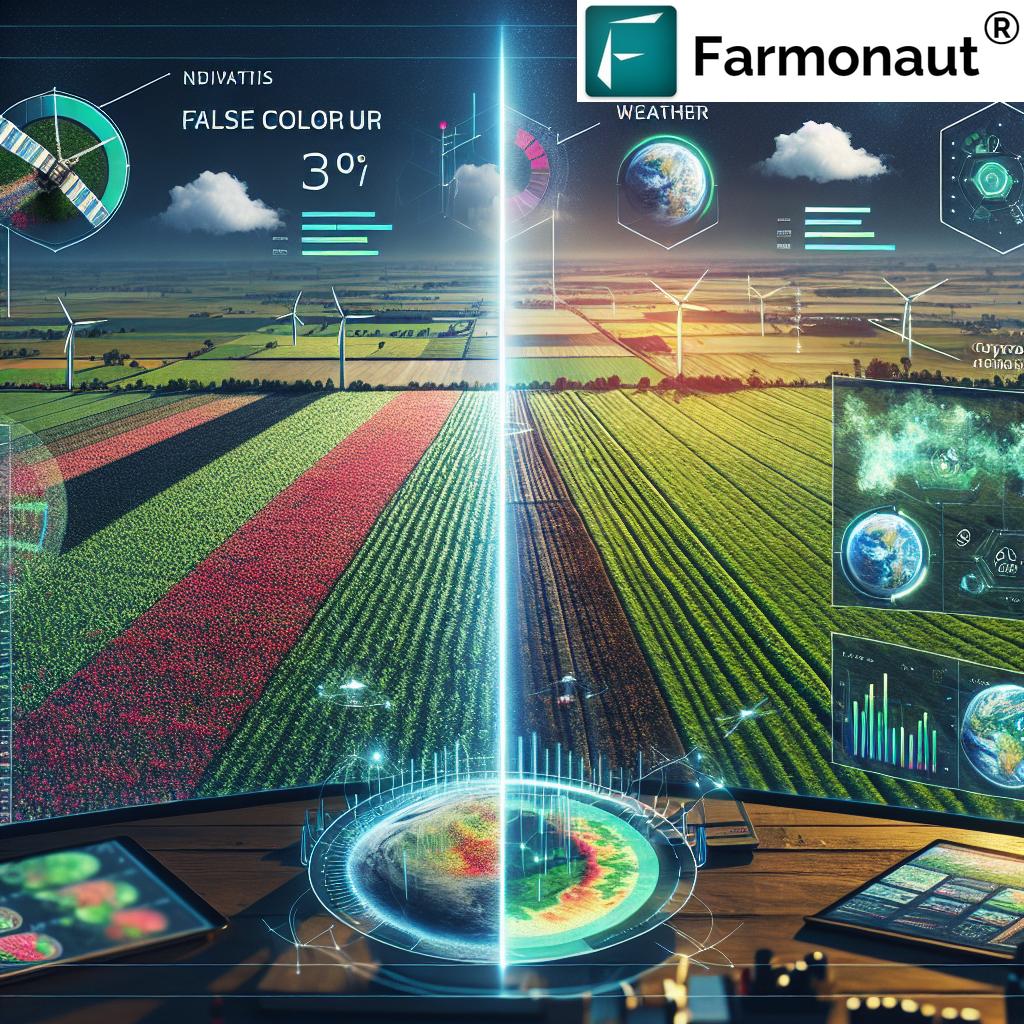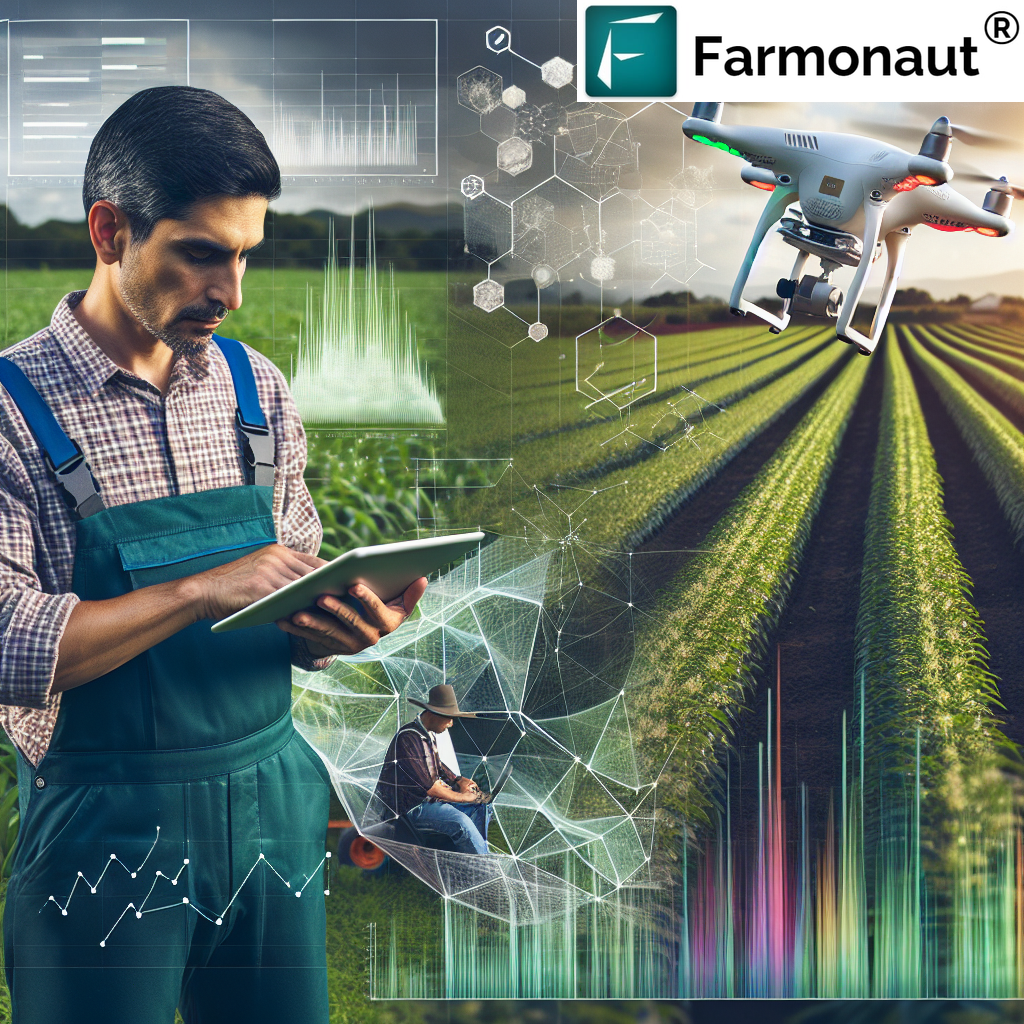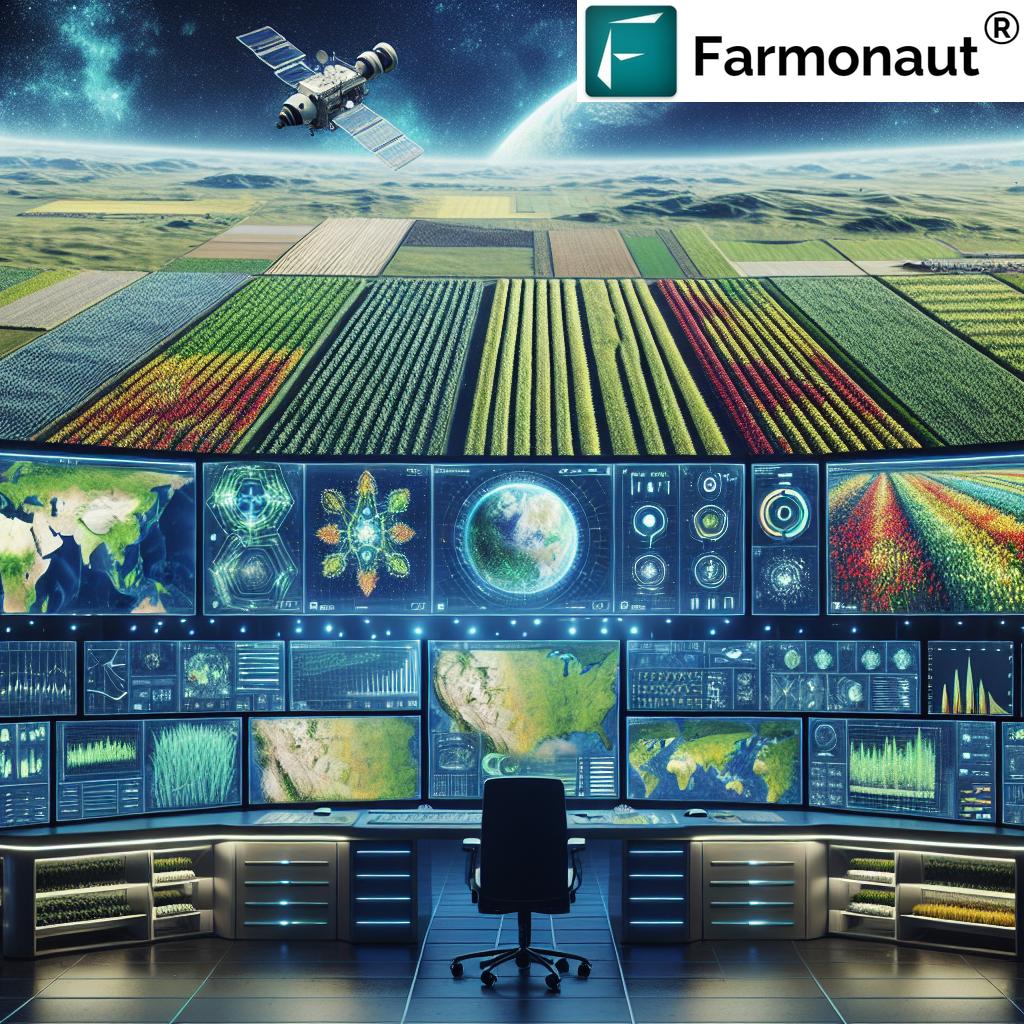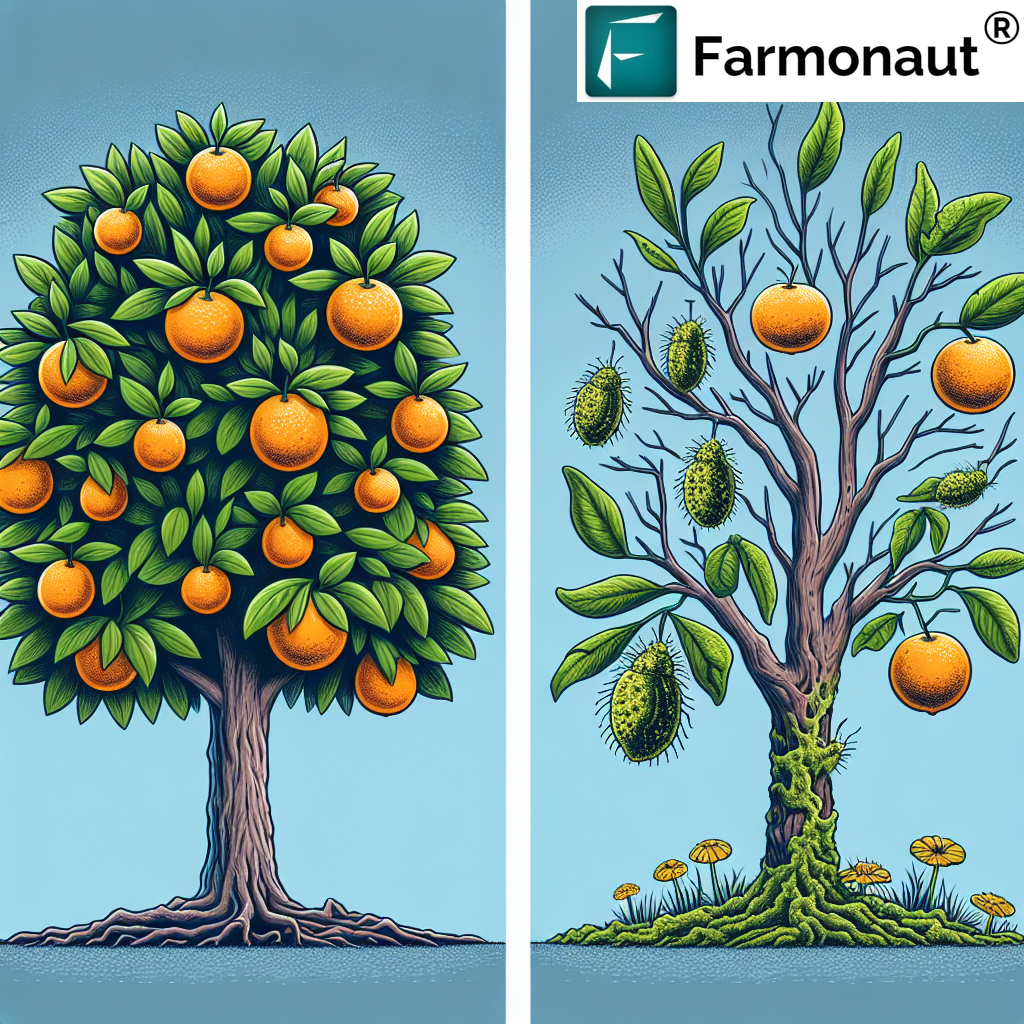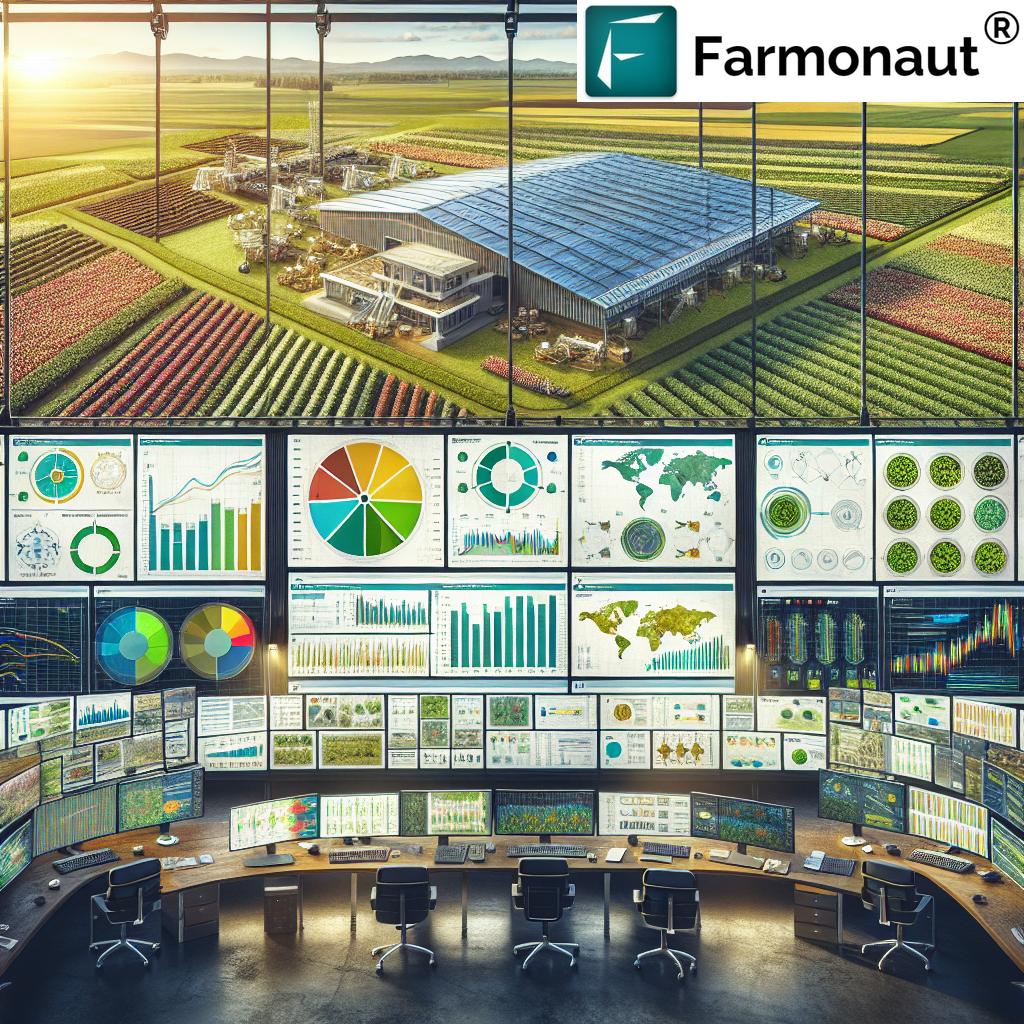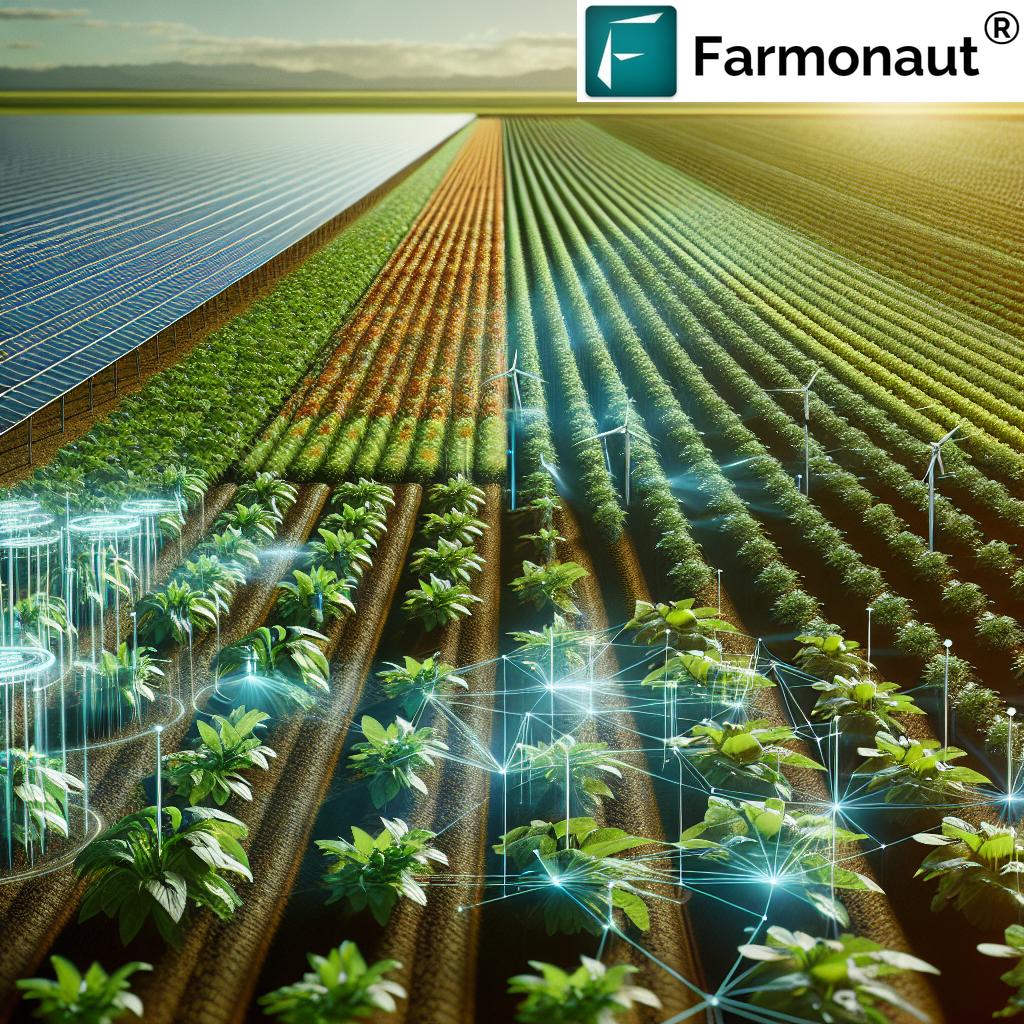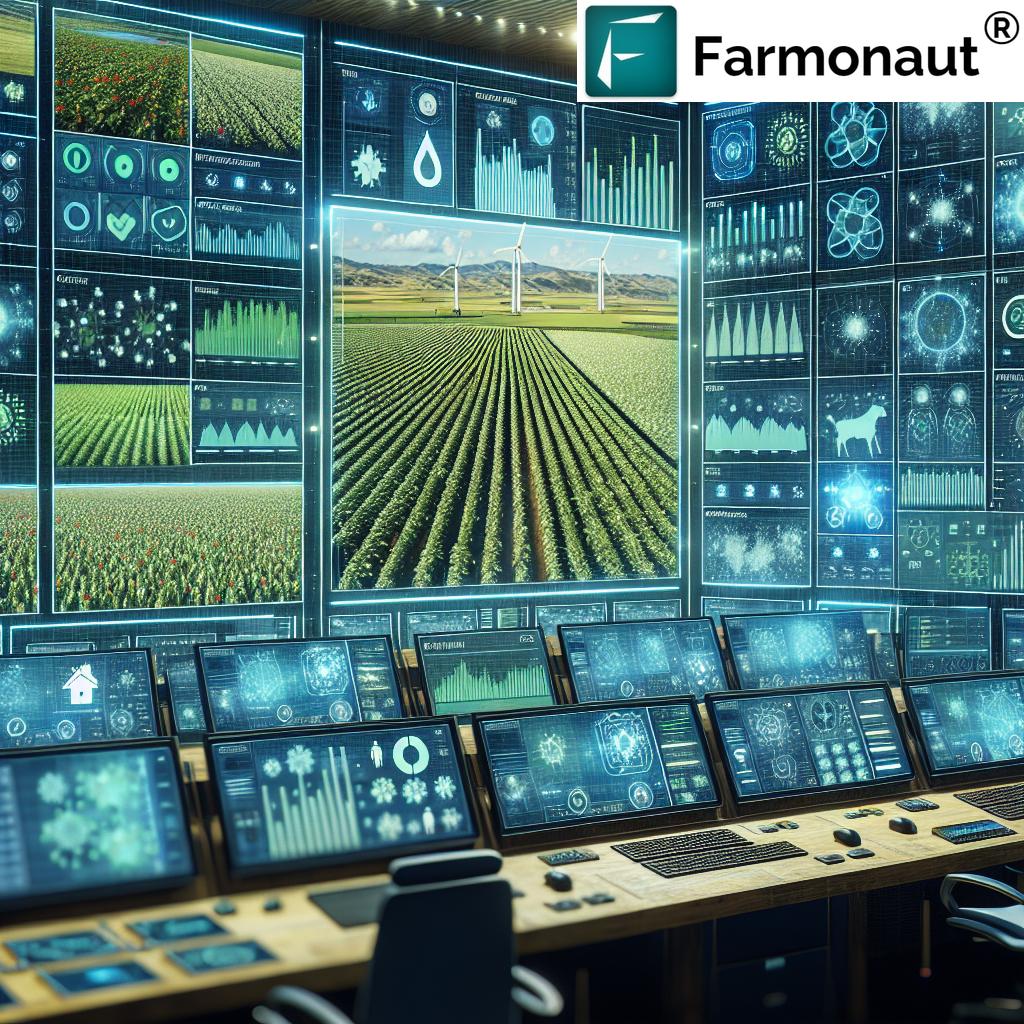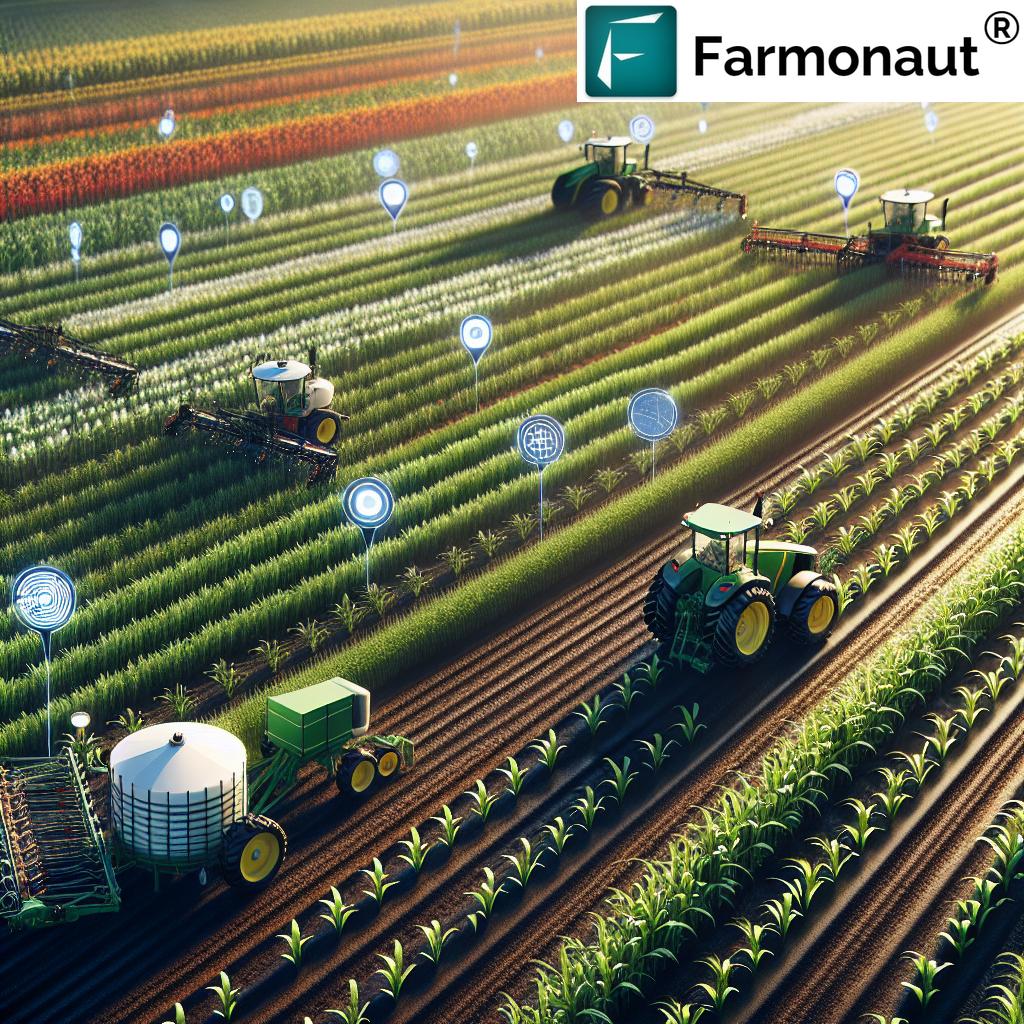Agricultural Drone Price & Models 2026 for Sale: Revolutionizing Precision Farming
Meta Description:
Agricultural drone price, models, features, and market trends for 2026. Explore how drones for agricultural use with advanced technology are enhancing productivity, sustainability, and farm management worldwide.
Table of Contents
- Introduction: Agricultural Drone Technology & Market Transformation
- What Are Agricultural Drones?
- Why Use Drones in Agriculture?
- Key Applications and Benefits
- Agricultural Drone Price & Models 2026 for Sale
- Comparative Features and Price Table for 2026
- Popular Agricultural Drone Models & Brands
- Future Trends: AI, IoT, Integration & Sustainability
- Farmonaut: Enhancing Sustainable Precision Agriculture
- Frequently Asked Questions
- Conclusion: Unlocking the Future of Smart Farming
“By 2026, over 70 models of agricultural drones are anticipated to be available globally, compared to 28 in 2022.”
Introduction: Agricultural Drone Technology & Market Transformation
In recent years, technological advancements have drastically revolutionized traditional farming practices. Among these innovations, agricultural drones stand as indispensable tools reshaping how crops are monitored, managed, and protected.
By 2025 and looking ahead to 2026, drones for agricultural use are no longer a futuristic concept—they are at the heart of modern, data-driven, precision agricultural systems.
From increasing productivity to reducing costs and promoting sustainable practices, agricultural drones are changing the way we approach farming, making agriculture smarter, more efficient, and sustainable for generations to come.
What Are Agricultural Drones?
Agricultural drones, often referred to as precision agriculture drones, are unmanned aerial vehicles (UAVs) specifically designed and equipped with advanced sensors, cameras, and GPS technology. Their primary purpose is to serve a wide variety of farming and agricultural applications:
- High-resolution aerial imaging and crop health monitoring
- Assessing soil conditions and identifying fertility or salinity issues
- Monitoring plant health and detecting early variations in growth
- Applying pesticides, fertilizers, and micronutrients with precision spraying systems
- Carrying out detailed, automated surveys of farmlands
- Improving irrigation efficiency—spotting dry, waterlogged, or patchy areas
With the use of multispectral and thermal imaging, these drones offer a perspective previously impossible with manual methods or traditional machinery alone. Their ability to collect, process, and transmit precise real-time data across vast plots opens up new frontiers in efficient resource and farm management.
Essential Features of Modern Agricultural Drones
- Automated flight planning and GPS-based navigation systems
- Onboard AI and sensor fusion technology for tailored crop health analysis
- High-resolution RGB, multispectral, and thermal cameras
- Payload capacity for fertilizers, pesticides, and seeding missions
- Advanced safety features like obstacle sensing, terrain following, and emergency landing modes
- Data analytics and seamless integration with farm management systems
“The average price range for advanced agricultural drones in 2026 is projected to be $2,500–$20,000 per unit.”
Why Use Drones in Agriculture?
The primary benefit of adopting agricultural drones lies in their unmatched capacity to capture highly detailed data and conduct complex tasks quickly and efficiently across large areas. Here’s why drones for agricultural use have become indispensable, especially with the advancements expected in 2026:
1. Unparalleled Data Acquisition
- High-resolution imaging and frequent monitoring allows real-time detection of plant stress, nutrient deficiencies, and pest or disease outbreaks.
- Advanced sensors and cameras allow farmers to assess crop health and make informed decisions based on actionable, georeferenced maps.
2. Targeted Resource Application
- Precision application systems ensure inputs like pesticides, herbicides, and fertilizers are used only where needed—significantly reducing chemical usage and environmental impact.
- This approach lowers input costs and helps meet regulatory standards for sustainable agriculture.
3. Labor & Cost Efficiency
- Drones reduce reliance on intensive manual field scouting and labor, especially in large commercial farms or areas with challenging terrain.
- Fast data collection and processing boost productivity and free up precious labor resources for higher value tasks.
4. Improved Irrigation Management
- Drones with multispectral sensors identify dry patches or waterlogged areas, allowing for precision irrigation—a critical need in regions facing water scarcity.
- Enhances water-use efficiency, reduces waste, and improves overall crop yield.
5. Comprehensive Aerial Surveys
- Aerial drones cover vast plots, delivering uniform spraying and mapping even in inaccessible terrains where traditional machinery can’t reach.
Key Applications and Benefits of Drones for Agricultural Use
- Soil Health Assessment: Drones equipped with multispectral imaging reveal insights about soil fertility, moisture, and erosion risks.
- Crop Health Monitoring: Real-time monitoring to detect diseases, pests, or nutrient deficiencies early.
- Precision Spraying: Automated, GPS-guided precision spraying minimizes wastage and environmental runoff.
- Planting & Seeding: Some drone models are now able to plant seeds, especially in hard-to-reach or hazardous landscapes.
- Yield Prediction: Coupling drone imagery with AI-driven analytics yields highly accurate production and yield estimates.
- Large-Scale Mapping: Aerial mapping and 3D modeling offer terrain, surface area, and crop density estimations vital for planning and machinery operations.
- Sustainable Practices: Reducing unnecessary chemical input aligns with global goals for sustainable farming and environmental stewardship.
Agricultural Drone Price & Models 2026 for Sale: Market Overview
As we approach 2026, the market for agricultural drones for sale has matured significantly, with a growing diversity of models catering to every segment—from smallholder growers to industrial-scale farms. In fact, the estimated price range for advanced agricultural drones in 2026 will vary widely based on capabilities, payload, features, brand, and automation level.
Let’s explore how agricultural drone price breaks down:
-
Entry-Level Drones ($1,500–$5,000):
- Suitable for small farms or hobbyists
- Basic imaging, limited payload, short battery life
-
Mid-Range Drones ($5,000–$15,000):
- Advanced cameras (RGB, multispectral), longer battery life (30–55 mins)
- Precision spraying and mapping capabilities
-
High-End/Commercial Models ($15,000–$30,000+):
- Long endurance, multi-payload (up to 40 kg+), AI-powered analytics
- Customizable integration—fleet management, IoT, and software compatibility
- Automated multisensor analytics and safety systems
The dji agricultural drone price is a common reference in the market, with DJI’s range offering robust models for both mid-sized and large commercial farms. However, many brands worldwide present specialized models tailored to specific applications like rice paddies, vineyards, or plantation crops.
Comparative Features and Price Table: Agricultural Drone Models 2026
To better understand which models best fit specific farm needs, below is a side-by-side comparison of some of the most anticipated agricultural drone models for sale in 2026, highlighting estimated pricing, capabilities, and suitability.
| Drone Model | Estimated Price (USD) | Battery Life (minutes) | Payload Capacity (kg) | Camera Resolution (MP) | Flight Range (km) | Key Advanced Features | Recommended Farm Size (acres) |
|---|---|---|---|---|---|---|---|
| DJI Agras T25 Pro | $7,900 | 42 | 25 | 48 | 12 | AI Obstacle Avoidance, Terrain Following, Precision Spraying | 20-200 |
| XAG P150S | $10,800 | 55 | 40 | 60 | 15 | Auto Spraying, AI Mapping, Multispectral Imaging | 100-500 |
| Parrot BlueField V6 | $4,200 | 38 | 12 | 32 | 7 | Thermal & NDVI Imaging, Geofencing | 10-80 |
| Yamaha RMAX 2026 | $19,500 | 60 | 35 | 50 | 18 | Heavy-duty Spraying, 3D Terrain Mapping, Fleet Integration | 150-600 |
| Sentera FieldEdge Ultra | $2,900 | 30 | 5 | 16 | 5 | NDVI Imaging, Auto Field Coverage | 1-30 |
| DJI Agras T50 | $17,800 | 53 | 40 | 64 | 22 | Dual Spraying Arms, Autonomous Route Planning, Cloud Data Sync | 250-800 |
| Hylio AG-230 | $13,500 | 49 | 38 | 44 | 16 | Variable Rate Spraying, Remote Diagnostics, RTK GPS | 100-400 |
| PrecisionFly AeraOne Pro | $5,400 | 40 | 18 | 28 | 10 | Auto-Seed Dispersal, AI Analytics Integration | 40-150 |
Disclaimer: Specifications & price estimates are for reference for the year 2026. Actual prices and capabilities may vary depending on model releases, currency, and region.
Popular Agricultural Drone Models & Brands for 2026
Let’s take a closer look at some of the most recognized agricultural drone models, focusing on features, suitability, and how their agricultural drone price positions them in the market:
1. DJI Agras Series
- DJI remains one of the global leaders in manufacturing UAVs, with their Agras series (T25, T50, etc.) being top choices for commercial farms and advanced users.
- Features include: high payload capacity (20–40kg), obstacle avoidance, multispectral and RGB cameras, RTK GPS, advanced spraying, and autonomous flight.
- The dji agricultural drone price often reflects their robust build and comprehensive software integration—ranging from $8,000 to $18,000+.
2. XAG, Parrot, and Hylio
- XAG is known for heavy-payload spraying and modular build for large Asian and global industrial farms.
- Parrot’s BlueField series provides specialized multispectral mapping ideal for crop health monitoring on medium-sized lands.
- Hylio AG-230 offers custom programmable flight patterns and remote diagnostic capabilities for North American and Latin American markets.
3. Industry Innovations
- Brands like Sentera and PrecisionFly focus on affordability and plug-and-play analytics for smallholder to medium-sized farms.
- Manufacturers are now tailoring models for rice paddies, orchards, vineyards, and specialized plantation crops, accommodating diverse regional agricultural needs.
Critical Factors Driving Agricultural Drone Prices in 2026
- Payload Capacity: Heavier payloads increase drone price but enable larger, faster area coverage and more extensive input application.
- Battery Life & Flight Time: Longer battery and range support large field operations but entail higher costs due to advanced batteries and energy management tech.
- Camera Resolution/Sensor Suite: Drones with multispectral, hyperspectral, and 4K+ imaging for precision applications cost significantly more.
- Integration & Software: Models allowing direct integration with analytics platforms or AI advisory systems, such as Farmonaut’s Large Scale Farm Management, can justify premium pricing with added value for resource management, automation, and team collaboration.
- Brand, Support, and Regulatory Compliance: Globally recognized brands with proven safety, software, and parts support may command higher pricing due to added reliability.
Future Trends: AI, IoT Integration & Sustainability in Agricultural Drones
By 2026, agricultural drones aren’t just flying cameras—they are sophisticated autonomous farm assistants that:
- Integrate seamlessly with IoT sensors deployed across fields for unified resource management (Fleet & Resource Management Tools).
- Leverage AI & machine learning for predictive analytics: forecasting crop yield, pest outbreaks, disease risks, and planning precise interventions.
- Support sustainable practices with continuous environmental impact monitoring and carbon footprinting.
- Connect with traceability solutions that use blockchain to document every input and output event across crop cycles.
- Automate routine farm management tasks while providing detailed insights to optimize yield and minimize waste and environmental impact.
Farmonaut: Enhancing Sustainable Precision Agriculture with Satellite & AI Solutions
At Farmonaut, we recognize that the powerful synergy of drones, AI, and satellite technology is unlocking unprecedented resource management and productivity gains for all types of agricultural operations.
- Our platform provides real-time crop monitoring using multispectral satellite imagery, supporting sustainable practices and early detection of crop health issues.
- With AI-based advisory (Jeevn AI), we deliver tailored guidance to optimize input usage—fertilizers, water, chemicals—helping you boost yields while lowering environmental impact.
- Our solutions make blockchain-based traceability and carbon footprinting accessible, ensuring transparency and verifiability from seed to storage.
- You can also leverage our fleet management tools to track agricultural drones and ground vehicles simultaneously, optimizing logistics and reducing costs and downtime.
Farmonaut’s API (API) and developer documentation enable seamless integration of satellite and field data with other dashboard systems and equipment, creating a 360-degree view of field operations.
And for those needing financial risk assessment in farming, our Crop Loan and Insurance Verification solution automates satellite-based crop health checks for banks and insurers, protecting both producers and financial institutions.
Farmonaut technology is available as an  ,
,
Android App  , and iOS
, and iOS  for on-the-go farm, mining, or resource management.
for on-the-go farm, mining, or resource management.
Farmonaut Subscription Plans
Maximize your data-driven farm management and integrate AI, blockchain, and satellite technology in 2026 and beyond. Explore our subscription options below:
Frequently Asked Questions: Agricultural Drones for Sale & Precision Farming (2026)
- What is the typical price range for an agricultural drone in 2026?
- The agricultural drone price in 2026 varies from about $2,500 for entry-level drones aimed at hobbyists or small farms, up to $20,000 (and higher) for advanced, commercial-grade models featuring increased payload, multispectral imaging, and AI analytics.
- What factors most affect the price of drones for agricultural use?
- Price is influenced by payload capacity, flight time, camera and sensor capabilities (RGB, multispectral, thermal), integration with analytics and automation software, and the degree of safety/autopilot systems included.
- Which are the best agriculture drone models to buy in 2026?
- The best agriculture drone depends on your requirements. For large farms, models like the DJI Agras T50 and XAG P150S are favorites for their payload, flight time, and automated spraying. For small farms, options like the Parrot BlueField V6 or Sentera FieldEdge Ultra offer multimodal crop monitoring at a lower cost.
- Are agricultural drones difficult to use or require a license?
- Most modern agricultural drones are designed for ease of use, with automated flight planning and obstacle avoidance for non-pilot users. However, many regions require operator certification or registration due to airspace safety rules.
- Can drones replace traditional aerial surveys and crop scouting?
- Yes. Drones conduct faster, more detailed, and more cost-effective aerial surveys compared to manned aircraft or ground scouting, offering real-time monitoring and actionable analytics.
- How do I integrate drone-collected data with my farm management system?
- Many commercial drones and platforms (including Farmonaut’s API and Large Scale Farm Management) offer direct integration, letting you seamlessly analyze, store, and act on drone-generated imagery, health maps, and input recommendations.
- What other precision agriculture tools should I consider alongside drones?
- For complete farm optimization, complementary tools include carbon footprinting to monitor environmental impact, fleet management solutions for vehicles, and satellite-based crop loan and insurance verification for robust risk management.
- How can Farmonaut help maximize my returns from agricultural drone technology?
- We offer affordable, scalable satellite-based monitoring and AI advisory that integrates with aerial drone data, giving you end-to-end field visibility, resource optimization, and instant reporting through both web and mobile apps.
Conclusion: Unlocking the Future of Smart Farming with Drones
The journey into 2026 finds agricultural drones at the heart of a precision farming revolution. Their seamless integration of aerial imaging, AI, IoT, and data-driven management is propelling agriculture toward unmatched levels of productivity, sustainability, and economic efficiency. As agricultural drone prices become more accessible—with over 70 models hitting the global market and advanced features filtering down to even the most affordable units—the question is not whether to adopt drone technology, but how quickly you can integrate it to maximize your farm’s yield, sustainability, and competitive edge.
Whether you are a smallholder seeking greater crop health monitoring or a large-scale operator automating vast fields, choosing the best agriculture drone for your needs—and pairing it with ecosystem platforms like Farmonaut—unlocks the smart farming tools of tomorrow, available today.
Explore agricultural drones for sale in 2026—invest in sustainability, reduce costs, and take your farm’s potential to new heights.
Ready to manage your agricultural resources more efficiently? Start with Farmonaut’s satellite-based solutions—the smarter way to monitor, analyze, and optimize your operation.

